
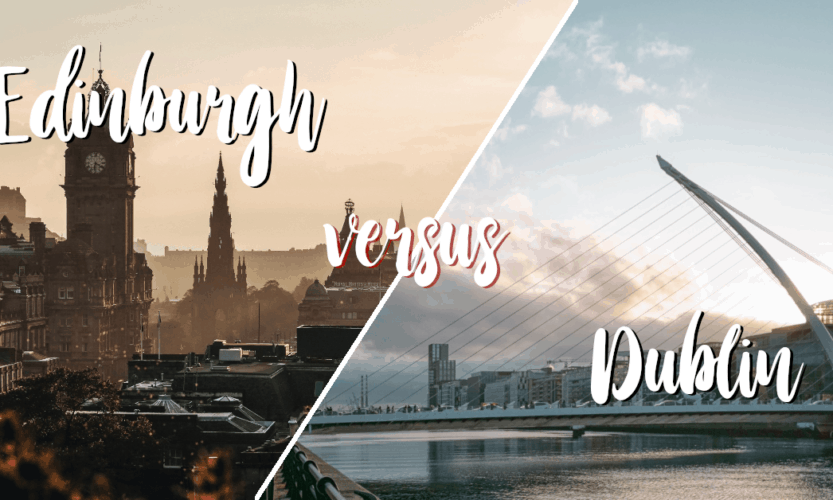
To preface this entire article, I’ll just say this: there is no one-size-fits-all answer to the question ‘Should I visit Dublin or Edinburgh?’. Every traveller is different and wants different things when travelling, so I can’t choose between Edinburgh and Dublin for you. What I can do, however, is list some pros and cons for both and help you come to your own conclusion.
It’s always tough to figure out where you’re travelling to next and to create your travel itinerary, but I am here to help.
Skip ahead to specific sections using the links below:
For starters, check out my dedicated guides to solo travel in Edinburgh and Dublin.
Now, let’s actually compare the two cities in terms of solo travel friendliness.
Dublin was the very first city I ever travelled to by myself, so I have a special relationship with it.
Now, the thing is, I’m not sure if I like solo travel in Dublin because it was my first solo experience or if it’s actually a great city to visit, but I would definitely recommend it.
As for Edinburgh, it’s quickly become one of my favourite cities in the UK — and you should know, I REALLY loved Brighton and London.
There are plenty of things to do, the atmosphere is great and you’ll feel like you went back in time.
The winner: Edinburgh. I feel like the sheer atmosphere in the city is enough to trump Dublin as the best city to travel to by yourself, even though I have more special memories in the Irish capital.
Edinburgh and Dublin are similar in size, and they both have plenty of things to do for travellers. Here’s a quick overview of the most important tourist attractions in both cities.

Dublin:
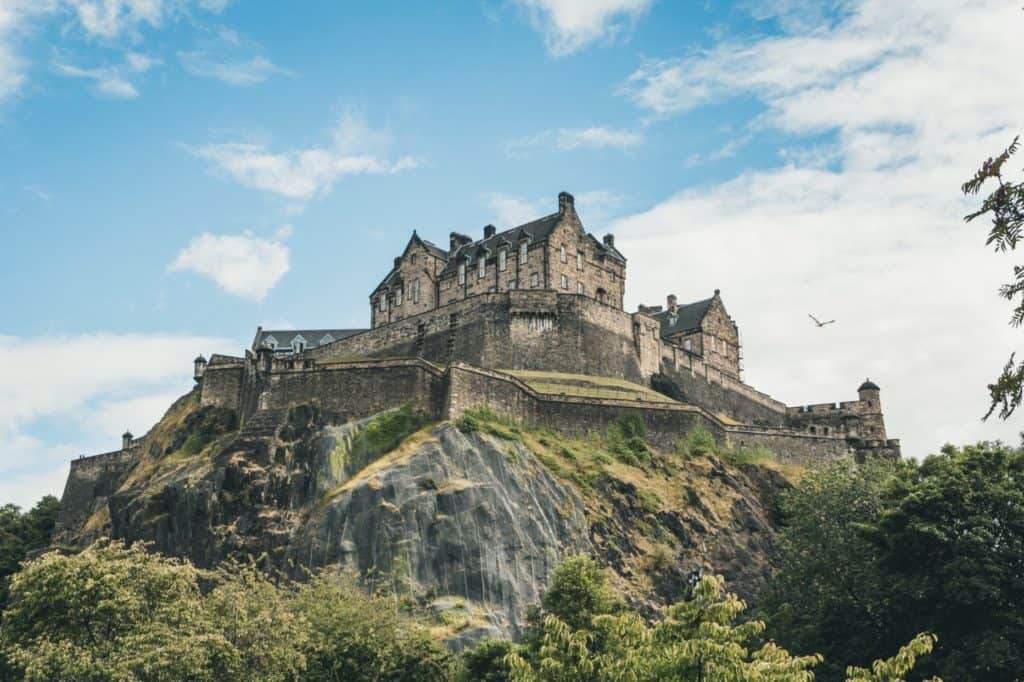
Edinburgh:
The winner: Dublin. I feel like you could spend more time in Dublin without getting bored, even though Edinburgh is a close second in this category.

In general, architecture in Dublin is nothing impressive. The city’s skyline is rather flat compared to bigger cities in Europe, like London and Rome. That being said, there are some very impressive buildings in Dublin, like Dublin Castle, The Custom House and the Guinness Storehouse.

By contrast, Edinburgh architecture is more reminiscent of its history. By the very ground the city was built on, there are more differences in height than in Dublin. This results in higher, more impressive buildings, although these buildings tend to be less diverse than in the Irish capital.
The winner: Depends. If you’re into history, Edinburgh wins. But if you’re into modern architecture, I’d say that Dublin takes the cake in this category.

Some traditional food you have to try in Dublin:

And then, traditional food in Edinburgh:
The winner: Personal preference. This really comes down to what kind of food you prefer to eat, but I’m personally more inclined to choose Edinburgh.

Nightlife in Dublin is fantastic. The legal drinking age is 18 and many bars, pubs and clubs are sprawled around the city, with a dense concentration in the Temple Bar district.
The bad news, however, is that many clubs in Dublin have a cover charge, often ranging between €15 and €20.
Just because Edinburgh is a city steeped in history, doesn’t mean that there’s nothing else to experience there. There are many nightlife areas in Edinburgh to keep you drinking, singing and dancing until the early hours, including the Royal Mile, Grassmarket and the West End.
The winner: It’s a tie. Again, it really depends on what you’re after.
It must be said: both cities have incredibly friendly locals.

When I was in Dublin, I found that the Irish were more than willing to help out a solo traveller who was struggling to figure something out. Hostel and restaurant staff was also very friendly and helpful.

In Edinburgh, the locals’ willingness to help was very similar. It doesn’t feel weird to walk up to someone in Edinburgh and ask them a question, even if you’ve never met them before.
The winner: Dublin. When I was in Dublin, I never felt like I was strange for being there, which I have felt in other cities.
The whole Dublin vs. Edinburgh debate on pricing is really easy: Edinburgh is cheaper.
Since the average salary in Dublin is higher than in Edinburgh, it stands to reason that many aspects of life are more expensive there.
And that counts for things like housing and electricity, but also for things that affect travellers, like public transport and restaurants.
The winner: Edinburgh.
If you go back through this comparison, you’ll see that Dublin and Edinburgh both got the same number of points.
So, I guess it all comes down to what you’re looking for in your destination.
Do you want a vibrant city with friendly locals, energetic nightlife and plenty of things to do? Go to Dublin.
Are you looking for a weekend away at a city where history and present come together, where accommodation is more affordable and where breathtaking nature is just a stone’s throw away? Head to Edinburgh.
In the end, I can’t decide between Dublin and Edinburgh for you, but I can help you figure it out yourself.
Have you ever been to Edinburgh or Dublin? Did I miss anything or do you disagree with anything? Let me know in the comments.
PIN IT!




For a city that started as nothing more than a fort on a hill, Edinburgh hasn’t done too badly for itself over the years. If you’re visiting the Scottish capital in 2022, you’ll need some tips on tricks to help you figure out where to go and what to do. This is the essential Edinburgh solo travel guide.
After reading this post, you’ll no longer be wondering “Why should I visit Edinburgh?”, but rather “When can I go to Edinburgh?”
Don’t say I didn’t warn you.
Note: this post includes a free pdf Edinburgh itinerary. Just drop your email below and you’ll get the itinerary sent to your inbox within a few minutes.
Now, before we go any further, take a look at my Edinburgh travel video to find out why the city is one of my favourite solo travel destinations in Europe. (It only takes two minutes to watch and you’ll get a great feel of the city!)
Skip to the next section: How to get to Edinburgh
Before we kick off this Edinburgh solo travel guide, let’s take a look at some essential information about the Scottish capital.
Although it’s not the biggest city in the country — that’s Glasgow — Edinburgh has been the capital of Scotland since at least the 15th century. The city is one of the educational, historical, cultural and financial centres of the United Kingdom.
Skip to the next section: What to do in Edinburgh
There are a few ways to get to Edinburgh, including flights, trains and buses.
For most people travelling to Edinburgh from outside the UK, a flight will be the best option.
Travelling by train to Edinburgh is often the fastest and best value-for-money option for people coming from major cities in the UK, such as Manchester, Newcastle, Glasgow or Liverpool.
Check the National Rail website to find train times and timetables to Edinburgh.
Pro tip: you can save a substantial amount of money by travelling during off-peak times and departing from smaller train stations (e.g. London Euston instead of London Kings Cross).
If you don’t mind spending more time on your way to Edinburgh to save money on transport, a bus or coach is probably your best bet.
Be sure to check companies like National Express, Megabus and Citylink, as well as comparing bus fares on aggregate websites like Wanderu and Busradar.
Honestly, you’ll be able to visit everything you want to visit on foot.
But, just in case you want some more comfort instead of working out (yes, walking around Edinburgh is quite a workout), you can also rely on its excellent bus network.
Still not quite enough comfort for you? You can hail one of the 1000+ black taxis driving around at any time.
Now, let’s get to the meat and potatoes of this Edinburgh solo travel guide.
You’re here because you were wondering what to do in Edinburgh, and I’m here to answer that question for you.
Skip to the next section: Miscellaneous things to do in Edinburgh
Of course, these will be some of the most popular things to do in Edinburgh. In other words, lots of other people will be here.
But that doesn’t make these Edinburgh attractions any less worthy of a visit, right? There’s a reason why all these people decide to visit these places.

This 11th century castle is one of Edinburgh’s most recognisable monuments and was recently voted Scotland’s number one paid-for attraction.
As if seeing the magnificent castle on the hill wasn’t enough, it’s also home to the Crown Jewels of Scotland and the National War Museum of Scotland.
Price: From £11.50 per person.
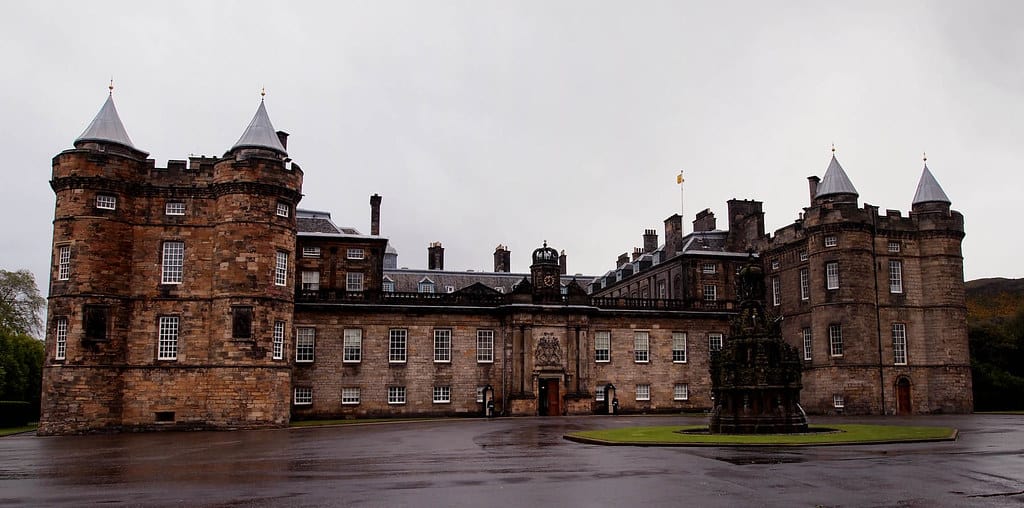
Commonly referred to as Holyrood Palace, this is the official residence of the British monarch (Queen Elizabeth II at the time of writing) in Scotland.
Whenever the Royal Family is not present at the Palace, the historic apartments of Mary, Queen of Scots are open to the public.
While you’re in the area, check out the Queen’s Gallery to see if anything interesting is on.
Prices:

Calton Hill is a hill located to the east of Edinburgh’s city centre. The hill is home to the Scottish Government and offers one of the best views of the city.
One of the monuments you will likely see on most pictures of Calton Hill is the Dugald Stewart Monument, a memorial to the Scottish philosopher of the same name.
Price: Free
The Old Town (or Auld Toun, as Scots might say), is the name for the historic city centre of Edinburgh.
This part of the city has retained much of its original medieval street plan, with narrow alleys, called closes (most notably Mary King’s Close), leading downhill on either side of one main road – the Royal Mile.
The Old Town and New Town were both declared UNESCO World Heritage sites in 1995.
Price: Free

The National Museum of Scotland was established in 2006 after a merger between the Museum of Scotland and the adjacent Royal Scottish Museum.
This museum highlights key events in Scottish history as well as more general collections regarding technology, world cultures and natural history.
Notable exhibits include the stuffed body of Dolly the sheep (the first cloned animal from adult cells), one of Elton John’s suits, and the Scottish Maiden (a guillotine before it was cool).
Price: Free

Contrary to popular belief, the Scott Monument isn’t dedicated to people with the Scottish nationality. Instead, it’s a monument to author Sir Walter Scott.
Fun fact: after Scott’s death, a contest was held to come up with a design for this monument. A man named George Meikle Kemp entered the contest under the pseudonym John Morvo because he was a self-taught architect and he feared that his reputation would disqualify him.
The contest judges liked his design so much that they awarded him the contract to construct the monument.
Price: Free
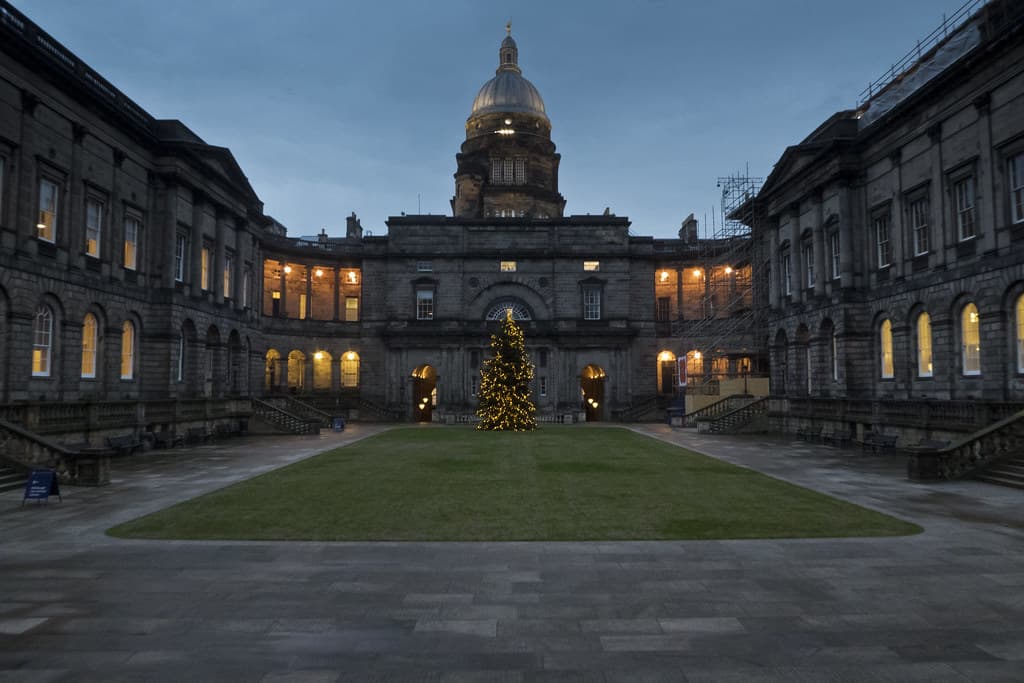
The Old College is one of the buildings of the University of Edinburgh in the city centre. An architect named Robert Adam designed this building to replace a few older buildings of the university.
This building is currently home to the School of Law, some parts of the University’s administration, and the University’s public art gallery, the Talbot Rice Gallery.
Price: Free
Skip to the next section: Off-beat things to do in Edinburgh

Arthur’s Seat is the name of an extinct volcano, which is the main peak of a park called Holyrood Park.
For a very accessible hike just outside the city centre, Arthur’s Seat is the place to be.
When we were in Edinburgh, we were greeted by a man in a traditional kilt playing the bagpipes at the summit of Arthur’s Seat.
Price: Free
As mentioned earlier, Mary King’s Close is one of the most notable historic closes off the Royal Mile in the historic city centre of Edinburgh.
This particular close was named after Mary King, a burgess who lived here in the 17th century.
At the time of the construction of the Royal Exchange (18th century), this close was shut off for the public and became shrouded in mystery.
Today, Mary King’s Close is operated as a visitor attraction.
Price: A guided tour by Real Mary King’s Close costs £16,50 for adults and £14,25 for students.

Princes Street is the southern border of Edinburgh’s New Town district, and also the city’s main shopping street.
The street has been an important part of Edinburgh’s street plan ever since its construction in the 18th century. Today, the north side offers many shops to travellers and locals alike, while the south side gives everyone a scenic view of the old town and Princes Street Gardens.
Price: Free

If you like optical illusions, holograms, photography and interactive exhibits, Camera Obscura is the place to be.
Founded by Maria Theresa Short in 1835 as a way to exhibit scientific instruments, Camera Obscura today features over 100 exhibits, games and shows that are worth an hour or two of your time.
Don’t miss the vortex tunnel, the camera obscura show and the panoramic view of Edinburgh on the top floor.
Price: £16,50 (adults) / £14,50 (students)

As one of the most photographed locations in the entire city, Victoria Street is among the most recognisable and picturesque streets of Edinburgh.
And, to be honest, who could resist snapping a few photos of the curved street with its brightly coloured storefronts?
Fun fact: Victoria Street is often rumoured to have been the inspiration for Harry Potter’s Diagon Alley, as author J.K. Rowling spent most of her time writing her magical stories in Edinburgh.
Price: Free
The Royal Mile is the common name of the most important — and most-visited — street of Edinburgh’s Old Town district.
In reality, the Royal Mile isn’t the actual name of this street. Rather, it’s a succession of different, smaller streets (Castlehill, the Lawnmarket, High Street, Canongate and Abbey Strand).
Stroll along this vivid street to see street performers and buskers, eclectic shops, unique restaurants and funky pubs.
Price: Free
The Royal Botanic Garden of Edinburgh is one of Britain’s main scientific centres for botany. The Garden’s collection currently includes over 13.000 plant species.
In 2020, the botanic gardens are celebrating their 350th birthday — the perfect moment to learn all about the botanical history of Edinburgh and Scotland.
Price: Free entry to the gardens; £7 to enter the glasshouses (£6 for students)
Skip to the next section: Where to eat and drink in Edinburgh
The Surgeons’ Hall Museums were opened to the public in 1832, after having taught medicine students about bone and tissue specimens and works of art for hundreds of years.
If you want to learn about the history of pathology, medicine and surgery, SHM is the place to be.
One of the interesting attractions in the museum is a mock anatomy theatre where a short video teaches you about the history of public dissection among students of medicine.
Price: £8 for adults, £4,50 for students

The Holyrood Abbey Church was completed in the early 13th century. Ever since its construction was finished, it served as a central point in Scottish and English history.
The building started decaying due to several wars and revolutions throughout the years. The roof collapsed in 1768, and the abbey ruins have looked the same way for the last 250 years.
Price: Free
Dr Neil’s Garden is a garden located on the eastern side of the Holyrood park. It can easily be combined with climbing Arthur’s Seat into a day trip.
This garden has often been referred to as a hidden gem in Edinburgh. The garden houses rare plants, fabulous walkways and peaceful places to sit.
Price: Free, donations welcome

If you’re wandering along the Royal Mile and have an hour to fill, check out the Museum of Childhood.
As the name reveals, this museum focuses on objects, toys and games relating to childhood life. These objects tell the story of how children grew up in Edinburgh throughout the years.
The museum also has several interactive spaces and attributes to take photos with.
Price: Free, donations welcome
Skip to the next section: Where to stay in Edinburgh
(Click the links to go to the websites of these Edinburgh restaurants and bars)

When we’re talking about Edinburgh bars, we can’t leave out the Grassmarket area. This is a historic market place in the city centre and it’s home to many interesting bars, pubs and cafés.
Cocktails in Edinburgh? Look no further. Dragonfly has excellent drinks and very friendly staff members to serve them.
If you’re looking for ice cream in Edinburgh, you definitely need to go to Mary’s Milk Bar. They make fresh gelato every morning and the choice of flavours changes every day.
One of our favourite places to get breakfast in Edinburgh was Hula Juice Café. Established in 2007 as a juice bar, the concept now also covers healthy breakfast, brunch and lunch. (And it’s plastic-free!)
Brass Monkey is a bar and restaurant in Edinburgh’s Southside district. Besides food and drink, they also have a cushioned cinema room, board games and dartboard and arcade machines. (Plus, the drinks come with a student discount!)
Cuckoo’s Bakery is THE place to go for fresh, quirky cupcakes in Edinburgh. The cupcakes are baked from scratch every day and there’s a weekly special to surprise you!
If you’re into vegetarian food, local and international beers and good music, take a look at Paradise Palms. The food is award-winning and American-inspired, but without the meat.
This restaurant has a special place in my heart. Locally sourced burgers, mouth watering cocktails and a great atmosphere. What’s not to love?
The City Cafe is an mid-century American-inspired diner off the Royal Mile that has served burgers, all-day breakfast, milkshakes and drinks since the mid-1980s. My recommendation: full Scottish breakfast with haggis and black pudding.
Timberyard is a slightly higher-class family-run restaurant in an authentic brick warehouse. Here, you’ll find dishes and menus that use ingredients supplied by local growers, producers and breeders.
Spoon is a bistro-slash-cafe-slash-restaurant in Edinburgh that — according to their own website — aims to close the gap between a casual cafe and a formal restaurant.
Skip to the next section: Edinburgh solo travel tips
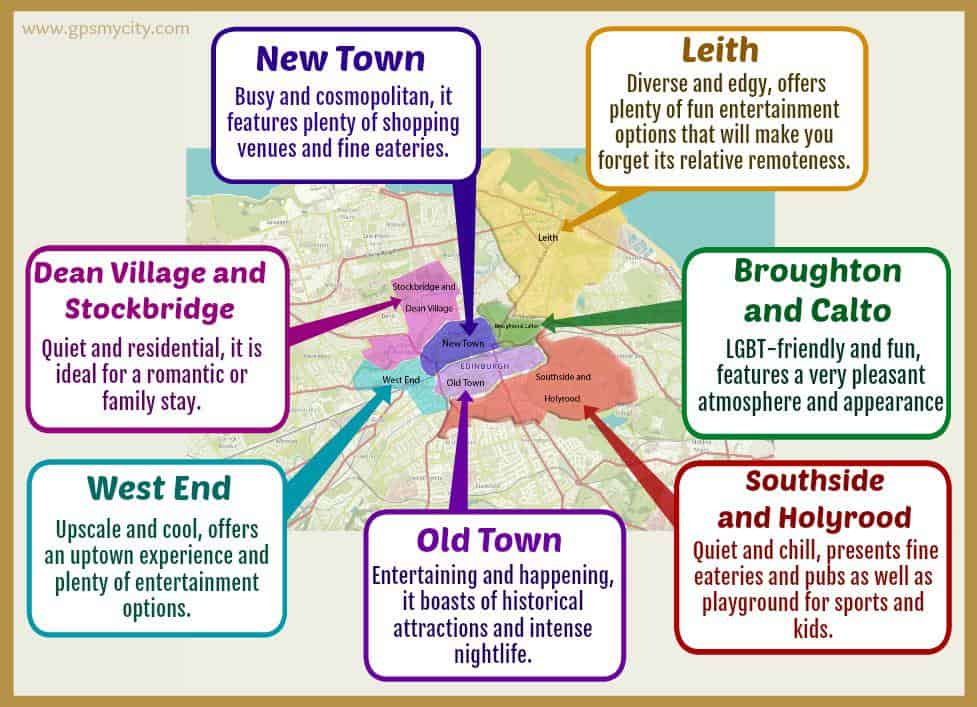

Hostels in Edinburgh are clean, high-quality and easily accessible. Prices for a bed in a shared dorm room run between €10 and €20 per night.
Find Edinburgh hostels here.
Related: How to find cheap hostel rooms
Short-term rentals are much less of a problem in Edinburgh than in other major cities, such as Paris and Barcelona.
As such, you can find some great places to stay as a solo traveller in Edinburgh.
For example, I shared a flat near Grassmarket with my two best friends.
Pro tip: sign up for Airbnb through this link and earn over €40 off your first trip.
In the interest of full transparency: I’ve never used Couchsurfing before. But it’s been on my list for a while now.
That being said, I’ve only heard good things about Couchsurfing. You get to stay with a local, who might be able to show you the ins and outs of the city, and — best of all — it’s completely free.
What’s not to love?
For anyone who might want a bit more luxury during their solo travels, it’s worth looking into budget hotels.
They’ll cost a bit more than, say, a backpacker hostel or an Airbnb, but you’ll get what you pay for.
A private bathroom, breakfast buffet or a hotel gym are just a few things that you could expect when you’re booking a hotel in Edinburgh.
Skip to the next section: Free Edinburgh solo travel guide (itinerary pdf)

An Edinburgh solo travel guide is nothing without some specific information about how to actually – you know – visit the city as a solo traveller.
As I’ve mentioned a few times in this article, Edinburgh is a very walkable city. The city centre isn’t very big, and you can get from one side to the other in about half an hour.
That said, if you’re looking to venture a little further than the Royal Mile or Princes Street, the buses in Edinburgh are also available.
All buses are operated by Lothian. A single journey costs £1,80 and you can purchase tickets on board with exact cash or contactless credit/debit card, or you can pre-purchase using the Lothian app.
Good to know: Lothian also operates Airlink 100, a bus that will take you from the airport to the city centre (and vice versa) for £4,50 one way.
As a solo traveller in Edinburgh, it may be worth it to purchase an Edinburgh City Pass. At £45 for one day, the price is rather steep. However, with some careful planning, you can fill a day with things to do in Edinburgh and get enough value out of the pass to justify its cost.
The Edinburgh City Pass also includes a free airport transfer by tram and a free guide book.
If you want to visit the Edinburgh Zoo, Edinburgh Dungeon, Scott Monument, Holyrood Distillery and more, you should look into buying an Edinburgh City Pass.
Edinburgh is literally world-famous for its festivals. They bring people from all walks of life together, and people come from everywhere to be a part of the celebrations.
And that’s one of the reasons why these festivals are perfect for solo travellers. Many of the people attending will also be travellers, which means you can easily socialise with them and maybe make some new friends.
Some examples of events worth attending in Edinburgh:
Aside from my tips for finding cheap food as a solo traveller in general, there is something I can tell you specifically about Edinburgh.
If you’re looking to cut down your food budget, don’t eat at restaurants.
A great option in Edinburgh is pubs located in closes and streets that go off of the Royal Mile. These pubs serve great food that will be cheaper than what you’ll get at proper restaurants.
Here are some great options for pub food in Edinburgh.
If you’re trying to save even more, have your main meal of the day at lunch and cook your own dinner.
Let me end this Edinburgh solo travel guide by saying this: if you’re in the Scottish capital and you’re not talking to locals in some way, you’re doing it wrong.
Edinbuggers are very friendly, willing to connect with travellers and share stories with one another.
Take advantage of that. After all, what’s solo travel about if not connecting to people and getting to know the world around you?
As a little bonus, I’ve put together a free Edinburgh solo travel guide for you. It’s a downloadable Edinburgh itinerary (pdf file) which you get access to by leaving your name and email in the form below.
PIN IT!



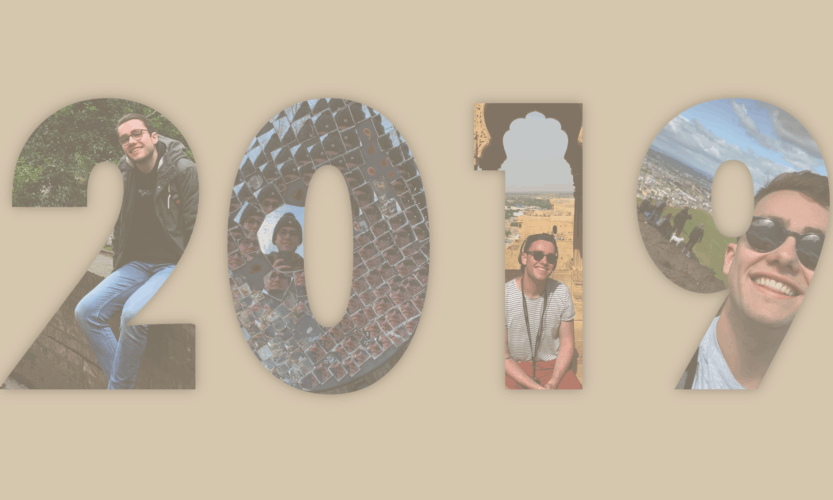
Yes, I know. I’m a few days late with this 2019 travel report.
It’s been a busy few weeks here in Belgium, but I couldn’t resist writing another article like the one I wrote last year. So here it is.
This is my 2019 travel overview.
Note: when I mention ‘blog post/video coming soon’, it might already be up and I forgot to update this post. So please take a look at my recent blog posts and my YouTube channel to stay up to date with all my content.
Note 2: to ensure that I can continue creating content, I’ve decided to make it easier for you to donate to Ars Currendi. Just click the link or scan the QR code below. Thank you for your support!

Click the links below to skip to the destinations you’re most interested in!

In February 2019, I took my third solo trip (after going to Berlin and Malta in 2017).
This time around, I went to the German capital Berlin (which is an awesome city for solo travellers, by the way).
I visited the Berlin essentials, like the DDR Museum, Brandenburger Tor and the Reichstag Building, on my first day. But after that, I went a bit more off-the-beaten-path. I went on a street art walking tour, hiked up a hill with a man-made Nazi station and explored an abandoned children’s hospital and an abandoned airport.
Video might be coming soon, but it might never come.
I’d say I’m sorry, but I don’t know if this video can deliver the quality that I want it to deliver.
All by myself, baby. It might seem strange to some of you, but I love travelling alone.
And, although there are plenty of reasons why solo travel sucks sometimes, I still think it’s one of the best ways to explore the world.
I went to Edinburgh in June to celebrate graduating from university.
So, we celebrated. (Pro tip: Dragonfly has the BEST cocktails.)
We also walked along the Royal Mile, took a ghost tour in Mary King’s Close, admired university buildings, climbed Arthur’s Seat and visited some museums, among other things.
Check the embedded map below to see more of what we did, ate and drank.
I’ll probably end up writing an article (or several articles) about Edinburgh in the near future.
I went to Edinburgh with my two best friends (@febelamkowski and @onanas_vandenameele).
Whelp. This is the big one.
In August, I went on a 3-week road trip in and around Rajasthan, India.
We definitely did too much to boil it all down to one paragraph, but I’ll try.
We admired countless palaces, forts and temples. After a wild camel ride, we slept in the desert. We zip-lined between hill forts and ridge tops. We took sleeper trains across the country. Indian ladies taught us to cook traditional Indian dishes. We went on a sunrise hike. We visited the Taj Mahal and the place where the Beatles spent three months. And, lastly, we took yoga classes and got Ayurvedic massages.
God, I want to go back.
I might write another article about India, but I’m not sure yet.
I went to India on a group tour, organised by Evelien from Joker (a Belgian travel agency).
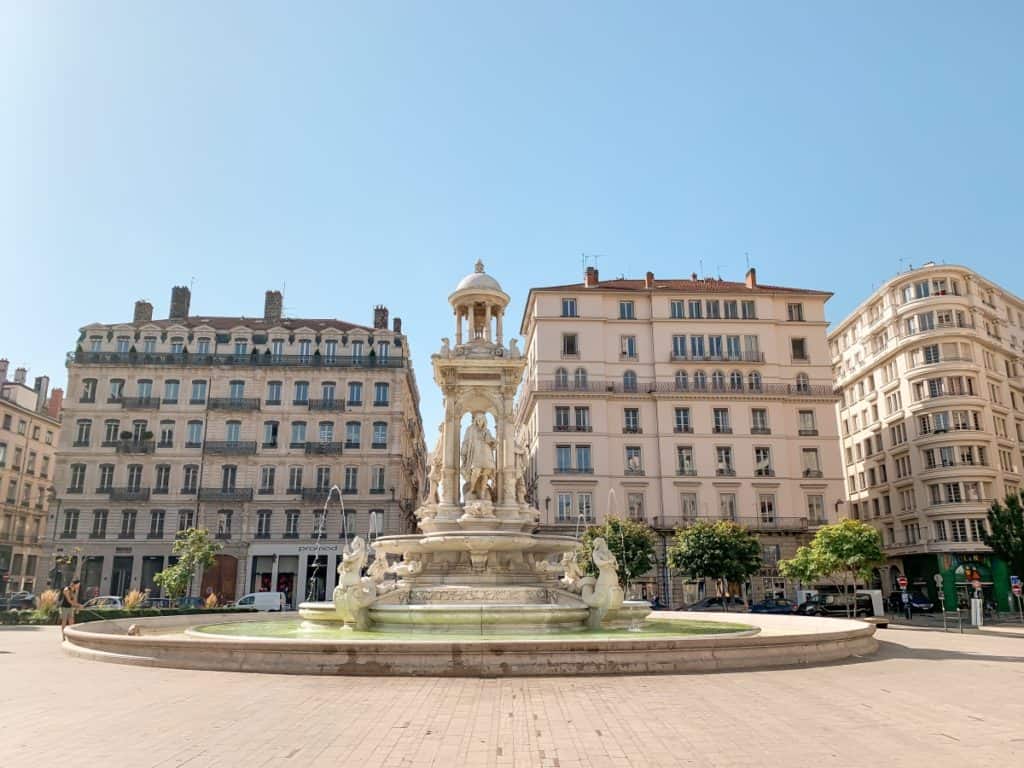
My last trip of this summer was a quick weekend getaway to Lyon. I was going on a trip with my mom, and I wanted to surprise her by planning everything. She only found out where we were going at the airport.
Fun fact: I was originally planning to go to Budapest with her, but a few weeks before the trip, our flights were cancelled for no apparent reason. I had to find an alternative, and I chose Lyon.
We mostly walked around the city without having a real plan, and it was great.
I won’t be making a video of this trip, because I don’t have enough suitable video footage.
I went to Lyon with my mom, as previously mentioned.
Since this wasn’t our first time in London, we decided to combine some of the must-sees – like Oxford Street, Hyde Park and Notting Hill – with some more obscure locations – like Southwark, St Dunstan in the East Church and Leadenhall Market.
It’s always been one of my big dreams to experience the Big Smoke around Christmas. And this year, I made it.
Article coming soon.
I went to London with my parents and my sister.
So, this was my 2019 travel report.
Now, that only leaves me with my current travel plans for 2020. And it’s going to be a big one.
For starters, I’m going skiing in France with my parents.
Next up is a Joker reunion (you know, those people I went to India with) in Bucharest, Romania.
That will be followed by a visit to two friends who are doing an internship in Pamplona, Spain.
In the summer of 2020, I’ll be going on a kayak trip to Sweden, a road trip through the south of Norway, a sibling trip to Snowdonia NP (Wales) and a surprise trip with srprs.me to top it all off.
If there’s one thing I’m sure of, it’s this: 2020 is going to be a good one.
Although I travelled less in 2019 than I did in 2018, the same message applies.
I didn’t write this to make anyone jealous of ‘how I’m able to do this’ or to rub my travels in your faces.
If anything, I did it to show you that — if travel is your priority — you can do it.
And also, I think I might make these travel reports an annual thing. They’re fun and easy to write, and they give you a quick overview of where I’ve been and where I’m going next.
Again, I know that I missed the mark by a few days. But hey, what can you do?
Catch you guys on the flippity flip!

Design by NXNW.